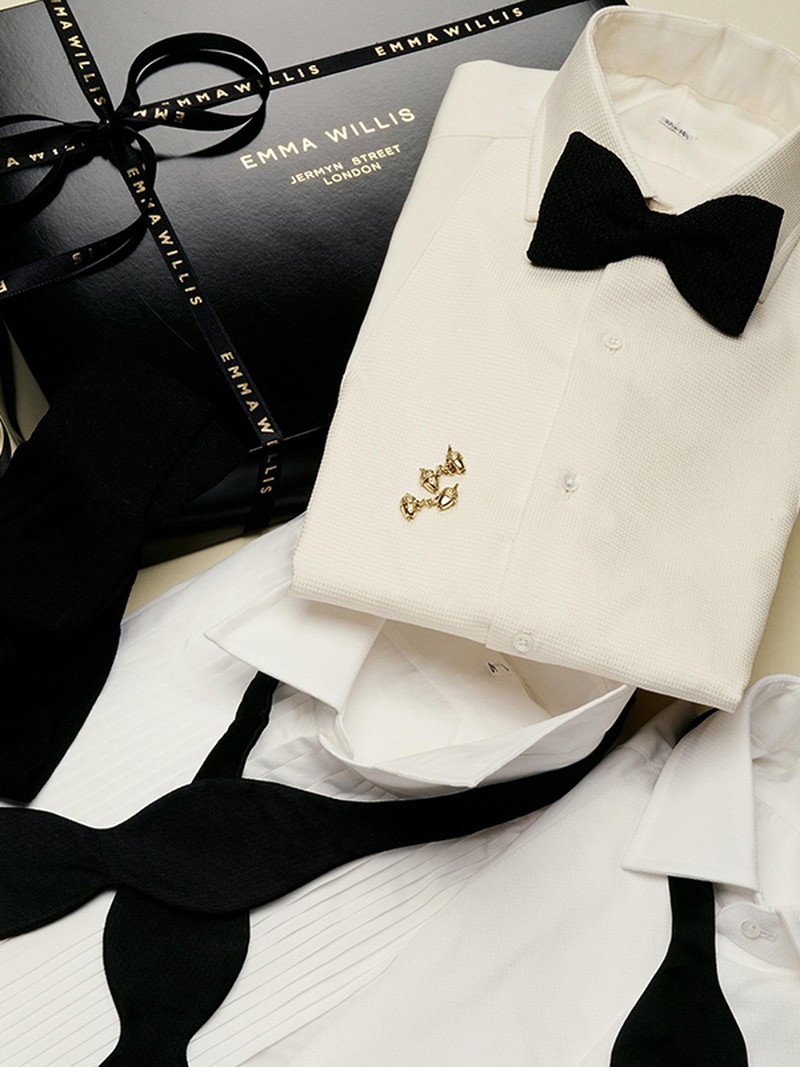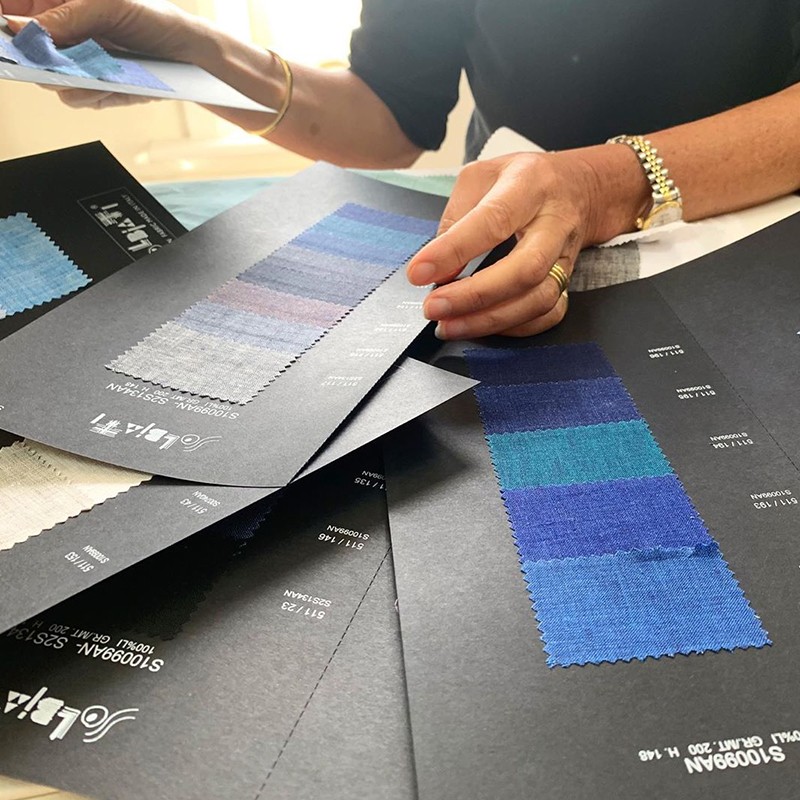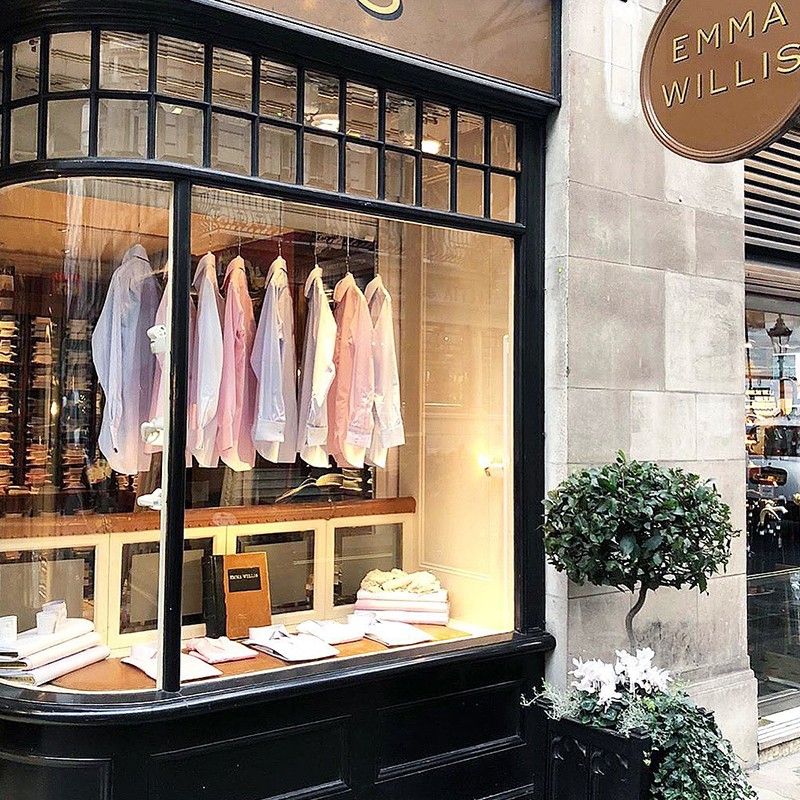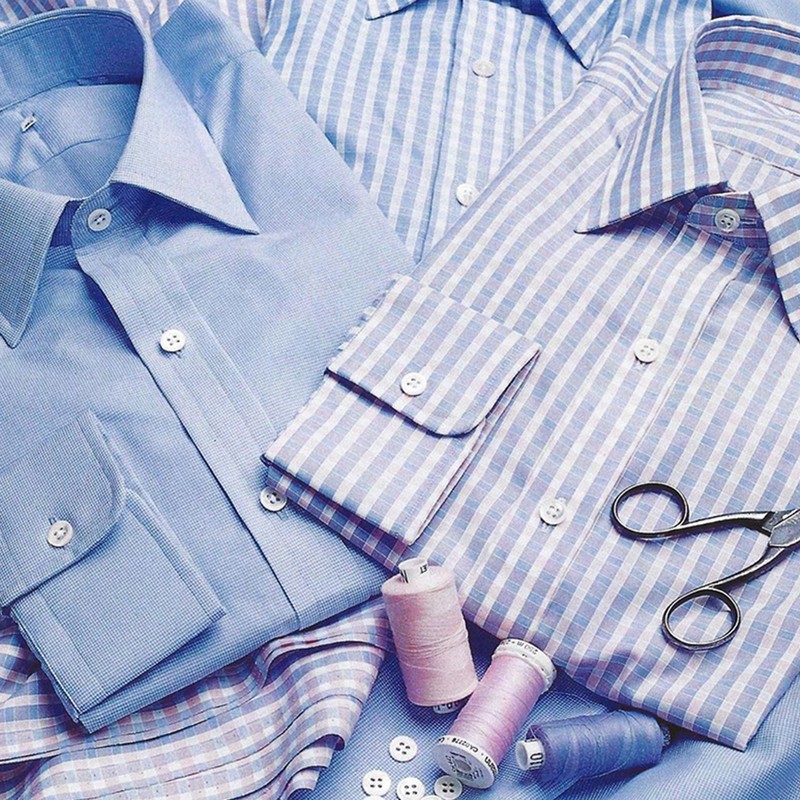A Jermyn Street Shirtmaker’s Guide To Buying A Shirt
Why did you choose to specialise in luxury shirts, Emma?
I started my business with a small bespoke shirt-making workroom in New Cross, where they produced the most beautiful, traditionally made shirts. I matched their fine craftsmanship with luxurious cottons and that remains the essence of what we do and what we are known for. For the fabrics, I had come across the Swiss mill Alumo while working for another designer and loved the quality, the smoothness of their cottons and the subtlety of their dyes.
What do you think a ‘proper’ shirt says about the wearer?
That he or she enjoys buying and wearing well-made clothing – and appreciates how good quality fabrics not only look but feel.
Let’s get down to business. Talk to us about collars...
A good shirt is an investment, so I always think you want the collar that gives the most flexibility. All of our collars are relatively structured, with collar bones, a good lining to hold the collar well (open or closed) and a quarter-inch edge stitch. The points I prefer at a maximum of three inches with a depth of 1.5 inches to create a strong look.
If you’re wearing a tie, I recommend a medium cutaway collar as it creates a good tie gap and doesn’t fight with the lines of the coat lapel, and also looks good open. If a collar is too cutaway, it can fly open too much, so is less flexible. I’m personally not a fan of button-down collars but I know some people love them and we certainly make many.
For linen, a softer lining is good but if it’s too unstructured the collar collapses and only looks right on the beach.

What’s best for black tie?
That’s also a cutaway collar, with room for the bow tie. White tie – very rare these days – is the only time you should wear a wing collar.
Are stays essential?
I think so. They keep the shape of the collar so, when replaced after washing, the collar points stand well up, framing the face. And you can easily take them out for a softer more casual look.
Any personal favourite styles?
I love our EW cutaway which I designed 25 years ago and just never dates. It works on a linen shirt, brush cotton shirt, business or evening shirt.
Moving onto cuffs, what are the options?
Double cuff, rounded, mitred and squared. Button cuffs are those shapes with one or two buttons. There are also cocktail cuffs, but I find these a little fussy even if Bond does like them!
What do the different types say about the wearer?
If you wear a double cuff with everything, it says you are a devoted traditionalist and love dressing up. Wearing them for business, a wedding or formal occasion shows you know how to dress formally. They’ll still give a good impression in more traditional worlds, but things are generally much less rigid now. Button cuffs are more practical as they lie flatter for working or writing. One button is casual; two buttons make a shirt look dressier if you don’t like wearing double cuffs; and three might look a little dandyish!
Thinking of fabrics and the fact it’s summer right now, your new collection suggests you’re a fan of linen shirts?
Linen creates a more relaxed look while retaining elegance. It has such a lovely look and texture. The vibrant, colour-drenched dyes created by Solbiati in Italy come in so many shades of blue – my favourite colour for a shirt whether it’s cotton, linen or brush cotton. This year they have finished the linens with aloe vera which gives it an extra supple softness.
Are there certain cottons that are better for summer work shirts?
Yes! The lighter the cotton, the cooler the shirt. Two-fold 170s, for example, will be very cool to wear. There is also a Swiss voile called voile compatto that is woven more compactly so it avoids transparency – I recommend this to customers working in extreme heat.
What about winter work shirts?
Brush cotton and cashmere cotton feel warmer thanks to their texture and the small 15% cashmere content. The texture looks right too for winter; it works with corduroy or tweed and so well with denim.



Where do you get your cotton from?
We use authentic West Indian Sea Island cotton spun, woven and finished at the Swiss mill Alumo. It really is the king of cottons. The raw cotton is of the best quality but has slightly more body, so when woven you have all the softness of, say, a superfine cotton in the 200s, but it is intact so there’s no transparency in white and ivory. It also has the magical property of being warm in cool weather and cool in hot wear – like good silk.
What’s brushed cotton good for?
It’s 100% cotton so it’s easy to look after. There’s no itch and it’s easy to launder, but the fibres brushed on the surface give it warmth and wonderful softness.
You also have a cashmerello line?
This is the king of winter shirtings: 15% cashmere and 85% fine Swiss cotton mix to create a super-soft, breathable cotton that works well with tweeds and corduroy, but can also be worn more formally with a tie. The cashmere does not make it too hot to wear in a moderate climate so – as with our brushed cotton – it can be worn in all weather except extreme heat.
Moving onto cuts, what are the options?
In ready-to-wear shirting, there’s slim fit which has about 5 inches of play and classic fit which has around 7 inches. Bespoke shirting is done to your measurements, of course, so you can choose anything you like from a very slim fit (3-4 inches of play) to an easy fit (7-8 inches).
Should you be matching your shirt shape to your body shape?
I think the fit should be ideally to your shape but not pulling anywhere. If you are very slim, you may need a slimmer fit all round, particularly on the arms if you have very slim arms. But I am not a fan of a spray on fit for any shape or size. On the body, a 5-inch play works for me!
What’s on trend right now?
Oversize – which makes bespoke cutting much easier! It’s still bespoke – i.e. tailored to body shape – but for high-fashion shoots right now we are mostly loaning oversize shirts for both men and women.
Anything else to think about in terms of the shape of a shirt?
If you tuck in, make sure the tails are long enough not to come out when you move around. You probably only need bespoke if you have very square or dropped shoulders; otherwise, ready-to-wear shapes do work for most in shirts, whereas suits can be harder.

On to colours and patterns, what are the most versatile options?
I’d recommend plain white and blue, and maybe a navy blue and white stripe and check for some variety. For work I would keep life simple and have, say, four whites and four pale blues which are easy with ties or an open collar.
Anything to think about if you’re going for something bolder in colour or pattern?
It may just sit staring at you in your wardrobe year after year!
Any other faux pas that must be avoided at all costs?
I would say shiny fabrics, logos and pockets on formal shirts.
And any final thoughts, Emma?
You only need eight to ten versatile, beautiful-quality shirts that can be worn for work, evenings, weekends and parties. Remember: good cotton will last much longer than cheaper cotton. So invest and look your best.
WHAT EMMA LOOKS FOR IN A PROPER SHIRT
- 100% cotton
- Collar stiffness
- Raised front for formal shirts
- Real mother of pearl buttons
- No logo
Check out Emma’s own range of shirting, including her new summer collection, here.
DISCLAIMER: We endeavour to always credit the correct original source of every image we use. If you think a credit may be incorrect, please contact us at [email protected].


